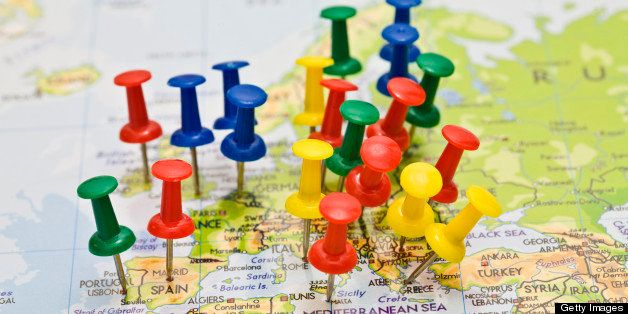
A Golden Opportunity
We now have a once in a lifetime opportunity to secure a Transatlantic Partnership Agreement (TAP), a free trade agreement with the European Union, that has been a dream of U.S. manufacturers for as long as I can remember. Both the White House and Congress are supportive as is the EU itself. Even the AFL-CIO which generally opposes Free Trade Agreements (FTAs), says a pact with the EU "could" be beneficial.
My former colleagues at the National Association of Manufacturers (NAM) are onto the FTA in a big way, and I wish them luck. On my watch we worked hard for some 20 free trade agreements (FTAs), including the North American Free Trade Agreement (NAFTA), and all of them have proven to be just as beneficial as we said they would be -- even more so.
But the TAP would be the mother lode of all FTAs. The European Union is the one economy in the world, taken as a whole, which is larger than our own. We already do a lot of trade with the EU of course, but an FTA would open the floodgates for a lot more mutually beneficial trade.
To be sure, a viable TAP would be extremely complicated. For one thing, the EU nations are advanced economies like our own and have over the years developed their own standards and protocols for product standardization, consumer safety, patent protection, disclosure and a host of other issues. To get from here to there, both the U.S. and the EU would have to make a serious commitment to removing regulatory barriers to trade, and synchronizing regulations and directives. For the most part, it isn't a matter of whether their rules or ours are more legitimate, but rather that they simply are different.
The NAM has called upon the Obama Administration to pursue these negotiations carefully and in good faith to establish a coherent, cooperative U.S.-EU process for the development of new regulations, especially for emerging technologies and innovations. In particular, U.S. manufacturers are concerned that EU governments and their regulatory agencies often introduce non-scientific, quasi-scientific and political factors into regulations using procedures that are not transparent to outsiders or even in some cases insiders. We are also concerned that in many cases, EU regulations are overly burdensome without benefits commensurate with their costs.
Of course, we are not exactly immune to those forces on this side of the Atlantic. Since the 1980s, the NAM and other business groups have been demanding, with some success, the application of strict cost-benefit analysis to rules and policies imposed by our own government agencies. It is a never-ending battle, but today most U.S. agencies at least give lip service to cost-benefit analysis. Whether we can persuade our European friends to embrace that concept is an open question.
But we should give TAP a serious try. It is something Washington can work together on, and a viable TAP would give a real boost to the economies of the U.S. and the EU. It would be, in Shakespeare's timeless phrase, a consummation devoutly to be wished.
